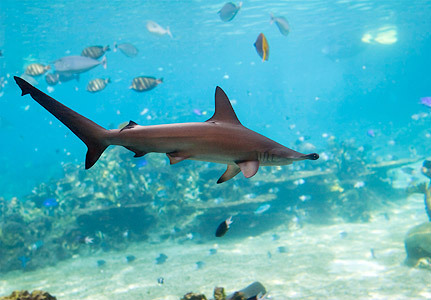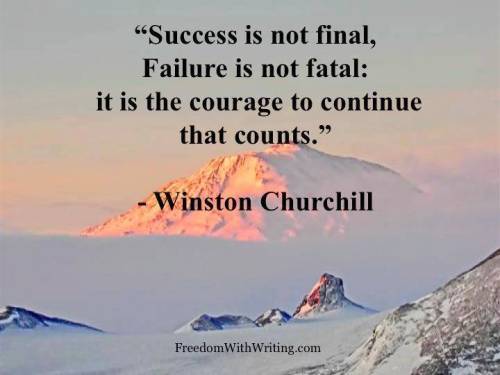M.L. Rowland's Blog, page 4
June 8, 2015
Sharks: 3. Humans: 76 million.
HAPPY WORLD OCEANS DAY!

Hammerhead Shark
I’ve been distressed lately by the 40th Anniversary re-release of the movie blockbuster, “Jaws.” Another generation exposed to the misinformation. More mass hysteria. More fear. More killing.
Why am I writing about or even care about sharks when I live in the middle of Colorado?
1. My father was a marine scientist and loved the ocean and all things therein. I inherited that love from him.
2. Movies, books, stories and mythology which inaccurately portray animals (wolves, for example) and other wildlife (sharks) perpetuate misinformation, engendering paranoia and fear which leads to hysteria and prejudice and ultimately the killing, sometimes the mass annihilation, of entire species.
For the record, humans do infinitely more harm to sharks than they do to us. There are on average 2-3 fatalities caused by sharks every year, approximately 65 injuries. Humans kill as many as 76 MILLION SHARKS A YEAR!
That’s
76
MILLION.
3. According to the National Oceanic & Atmospheric Administration, oceans cover 71 percent of the Earth’s surface and contain 97 percent of its water. Oceans and lakes play an integral role in many of the Earth’s systems including climate and weather. Oceans support the existence of nearly 50% of all the earth’s species. 50%! (For us math whizzes: that’s HALF.) There are 3.5 million square miles of coastal and deep ocean water. Oceans are key to transportation and recreation, and their resources hold the potential for cures to many diseases and other things we can’t even imagine or fathom (no pun intended).
4. Oceans are cool!
5. Sharks are the ultimate COOL!
What’s the point of all of this?
What happens to our oceans and their inhabitants happens to all of us. Oceans should matter to everyone.
Even people living in the middle of nowhere, a thousand miles from the nearest ocean.
Even people in Colorado.
Still not convinced?
I learned from a neat graphic I saw recently (written/compiled by Sam Polcer and Alician Buchl Perez) that the world’s largest shark sanctuary was recently established in the Marshall Islands in the Central Pacific. (Don’t have a clue where the Marshall Islands are? Look it up!)
Palau, a tiny island nation in the Pacific Ocean, 500 miles east of the Philippines and 2000(!) miles south of Tokyo, has 130 different species of sharks. Palau also has its own shark sanctuary.
According to this graphic, in Palau a single shark brings in an estimated $1.9 million to the tourist economy over the lifetime of the shark. Every year, shark ecotourism brings in $18 million to Palau making up 8% of the national Gross Domestic Product. Shark diving brings $24.7 million to Spain’s Canary Islands and $40 million to the Indo-Pacific region.
But sharks are caught and killed at an alarming rate solely to harvest the fins from which shark fin soup, an Asian delicacy, is made. What’s that shark worth once it’s caught and brought ashore? About $108.
$1.9 million vs. $108.
Seems like a no-brainer to me.
Oil and mining and drilling companies, politicians and their ilk spout as fact that conservation, responsible harvesting of our natural resources and the advancement of renewable forms of energy are bad for us and only cost money and destroy jobs. They keep telling us it’s good for all of us for them to harvest with impunity, destroy entire ecosystems, wipe entire species off the face of the Earth, drill and slash and mine and cut and dig as if there’s an endless supply and as if the destruction and use and misuse isn’t killing the entire world, including all of us.
And we, like sheep, BELIEVE THEM! (Insert head slap here)
But taking care of the Earth and its inhabitants (um, that would be YOU and ME) can only be good and beneficial and positive. For all of us. In so many ways.
So
Up with SHARKS!
Down with shark fin soup!
Pass it on!!
Seriously!
Besides…
…does anyone REALLY like shark fin soup?
Today is World Oceans Day. Celebrate oceans. Nurture them! Protect them!
For more information about the US National Oceanic and Atmospheric Association, please visit their website: http://www.noaa.org
For more information about Ocean Conservancy, please visit their website: www.oceanconservancy.org.
For more information about World Oceans Day, please visit their website at http://www.worldoceansday.org.
W

June 7, 2015
Sharks: 3. Humans: 76 million.
Posted this recently, but in honor of Shark Week, I’ll repost!

Hammerhead Shark
Why am I writing about or even care about sharks when I live in the middle of Colorado?
1. My father was a marine scientist and loved the ocean and all things therein. I inherited that love from him.
2. Movies, books, stories and mythology which inaccurately portray animals (wolves, for example) and other wildlife (sharks) perpetuate misinformation, engendering paranoia and fear which leads to hysteria and prejudice and ultimately the killing, sometimes the mass annihilation, of entire species.
For the record, humans do infinitely more harm to sharks than they do to us. There are on average 2-3 fatalities caused by sharks every year, approximately 65 injuries. Humans kill as many as 76 MILLION SHARKS A YEAR!
That’s
76
MILLION.
3. According to the National Oceanic & Atmospheric Administration, oceans cover 71 percent of the Earth’s surface and contain 97 percent of its water. Oceans and lakes play an integral role in many of the Earth’s systems including climate and weather. Oceans support the existence of nearly 50% of all the earth’s species. 50%! (For us math whizzes: that’s HALF.) There are 3.5 million square miles of coastal and deep ocean water. Oceans are key to transportation and recreation, and their resources hold the potential for cures to many diseases and other things we can’t even imagine or fathom (no pun intended).
4. Oceans are cool!
5. Sharks are the ultimate COOL!
What’s the point of all of this?
What happens to our oceans and their inhabitants happens to all of us. Oceans should matter to everyone.
Even people living in the middle of nowhere, a thousand miles from the nearest ocean.
Even people in Colorado.
Still not convinced?
I learned from a neat graphic I saw recently (written/compiled by Sam Polcer and Alician Buchl Perez) that the world’s largest shark sanctuary was recently established in the Marshall Islands in the Central Pacific. (Don’t have a clue where the Marshall Islands are? Look it up!)
Palau, a tiny island nation in the Pacific Ocean, 500 miles east of the Philippines and 2000(!) miles south of Tokyo, has 130 different species of sharks. Palau also has its own shark sanctuary.
According to this graphic, in Palau a single shark brings in an estimated $1.9 million to the tourist economy over the lifetime of the shark. Every year, shark ecotourism brings in $18 million to Palau making up 8% of the national Gross Domestic Product. Shark diving brings $24.7 million to Spain’s Canary Islands and $40 million to the Indo-Pacific region.
But sharks are caught and killed at an alarming rate solely to harvest the fins from which shark fin soup, an Asian delicacy, is made. What’s that shark worth once it’s caught and brought ashore? About $108.
$1.9 million vs. $108.
Seems like a no-brainer to me.
Oil and mining and drilling companies, politicians and their ilk spout as fact that conservation, responsible harvesting of our natural resources and the advancement of renewable forms of energy are bad for us and only cost money and destroy jobs. They keep telling us it’s good for all of us for them to harvest with impunity, destroy entire ecosystems, wipe entire species off the face of the Earth, drill and slash and mine and cut and dig as if there’s an endless supply and as if the destruction and use and misuse isn’t killing the entire world, including all of us.
And we, like sheep, BELIEVE THEM! (Insert head slap here)
But taking care of the Earth and its inhabitants (um, that would be YOU and ME) can only be good and beneficial and positive. For all of us. In so many ways.
So
Up with SHARKS!
Down with shark fin soup!
Pass it on!!
Seriously!
Besides…
…does anyone REALLY like shark fin soup?
Today is World Oceans Day. Celebrate oceans. Nurture them! Protect them!
For more information about the US National Oceanic and Atmospheric Association, please visit their website: http://www.noaa.org
For more information about Ocean Conservancy, please visit their website: www.oceanconservancy.org.
For more information about World Oceans Day, please visit their website at http://www.worldoceansday.org.
W

May 31, 2015
Canyon Carvings
“Should you shield the canyons from the windstorms
you would never see the true beauty of their carvings.”
― Elisabeth Kübler-Ross
© Photos by M.L. Rowland

May 30, 2015
This from a Man Who Knew a Little Bit about Courage…and Perseverance…
May 28, 2015
What HE Said
May 26, 2015
A Hero is…
“A hero is someone who has given his or her life to something bigger than oneself.”
— Joseph Campbell

May 19, 2015
The Most Effective Way…
May 8, 2015
MURDER ON THE HORIZON AVAILABLE FOR PRE-ORDER
MURDER ON THE HORIZON is available NOW for pre-order in both soft cover and electronic versions.
Order your own copy right now and receive it the day of release: August 4, 2015. Available for pre-sale on both http://www.amazon.com and http://www.barnesandnoble.com.
The first two books in mySearch and Rescue mystery series, Zero-Degree Murder��� and Murder Off the Beaten Path���, published by Penguin Random House, are both available on http://www.Amazon.com and http://www.BarnesandNoble.com, in Barnes and Noble bookstores, and in local bookstores and libraries.
If your brick and mortar bookstores are out of the book, ask them to order it for you!

April 27, 2015
Nepal Earthquake
My heart, thoughts and prayers are with the people of Nepal and India
after Saturday’s devastating earthquake.
And with the rescuers in Kathmandu, the outlying areas
and on Mt. Everest.
And with the grieving.
Namaste.

April 16, 2015
Mountain Rescue: Backcountry Survival – The Ten Essentials
This is a reprint of an article written by Chris Laursen, Grand County (Colorado) Search and Rescue, and published in the Sky-High News (Winter Park, Granby and Grand County areas of Colorado).
Shorts and tank tops while hiking around Columbine Lake in summer are fine … until the sun goes down or a sudden hailstorm hits. During my six years as a volunteer with Grand County Search & Rescue, I have lost count of the number of missions where the subject was ill prepared for the weather.
Upon reaching the subject, the usual response is, “I was just out for a day hike.”
It does not take much, a sprained ankle, broken tibia, an unexpected rain or snowstorm, to turn “just a day hike” into a life-threatening emergency. If this happens late in the afternoon or far in the backcountry, the time it takes to notify GCSAR, mobilize and reach the subject could mean nightfall and a 30-degree or more drop in temperature.
When GCSAR responds to a mission, we always assume we will be out for at least 24 hours, regardless of how simple or short the mission is expected to be, because we have come to expect the unexpected. We recommend that anyone who ventures into the backcountry assume the same.
While our rescue packs include many mission-specific items that are not necessary for a simple day trip in the backcountry (ropes, anchors, webbing, harnesses, etc.), we all carry what is known as the Ten Essentials, and wear appropriate clothing. Stay warm, stay dry, and stay alive.
Regarding clothing, the simple rule to remember is “Cotton Kills.” Always wear wool or synthetics when in the backcountry. Wool socks will provide a degree of insulation even when wet. Cotton socks, hoodies, etc. will suck heat from your body. A typical fatality on Colorado 14-ers is the hiker in a cotton hoodie that gets caught in a summer thunderstorm and dies of hypothermia.
The Ten Essentials listed below should be considered the minimum. Additional items should be considered based on the terrain, time of year, and length of the planned trip.
TEN ESSENTIALS
1. Field pack capable of carrying all your personal gear.
2. Map and compass. Cell phones and GPS devices can be useful, but should not be depended upon.
3. Whistle, sunglasses and sunscreen.
4. Extra clothing – spare socks, wool hat, fleece, water repellent windbreaker, gloves.
5. Flashlight or headlamp with extra batteries.
6. Fire starting kit.
7. Knife or Leatherman type tool.
8. Food (2,000 calories), one liter of water plus purification tablets or filter.
9. Emergency shelter (such as a plastic tarp and cord or bivy sack).
10. Personal first aid kit.
All of the above can be obtained at any good outdoor store and results in about a 10-pound pack.
One summer afternoon we were called out on a mission to assist an injured hiker. Three women from out of state were hiking near Columbine Lake when one fell, incurring a fractured lower leg. One of the women ran down the trail until she could get a cell phone signal to call 9-1-1. When we arrived, the sun had set and the temperature was plummeting. They were huddled together in shorts and tank tops, shivering from the cold. We gave them our spare fleeces and hats, packaged the injured hiker into a Life Blanket and litter, and carried her out in the dark to the trailhead and a waiting ambulance.
This was a successful mission with a happy ending. They do not all end that way. If she had been hiking alone with no one to go for help would she have survived the night? Maybe, if it didn’t rain.












